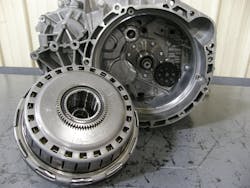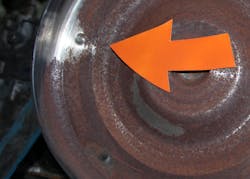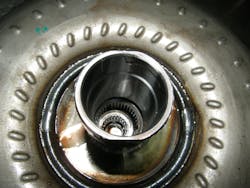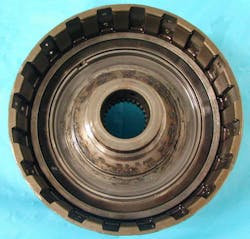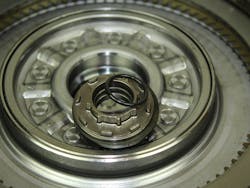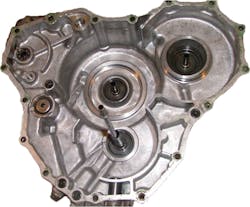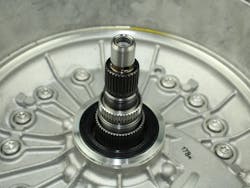Companies who rebuild torque converters will tell you the hundreds of times their converters are unjustly blamed for a problem. Anything from a no move condition to TCC shudder or slip. Not that there couldn’t be a converter problem like the wrong lining was used. But many times a closer look other than a converter is required.
Take shudder complaints for example. Shudders can be caused by motor mount problems, irregular crank shaft signals, mass air flow sensor problems, air filters especially (oil soaked filters), air intake ductwork leaks, vacuum leaks, valve timing issues, ignition systems, fuel systems, out of balance drive shaft(s) or tires, incorrect use of fluids, moisture intrusion, valve related sleeve or bore wear problems or stretched out or slightly longer converter bolts were used. Sometimes cylinder cut systems can be mistaken for a TCC shudder especially combined with some of the issues just mentioned.
Using too long or stretched out converter bolts is a self inflicted injury. A local shop that had done this one too many times had a converter opened. They then mounted the cover and plate in a location to be a reminder to all not to do this again (figures 1 and 2).
Another self inflicting wound to avoid is with torque converters that have an internal seal requiring the converter to be installed vertically rather than horizontally. GM’s 6T40/70 series front wheel drive converters are this way (figure 3). Installing these converters horizontally can damage the seal compromising converter operation.
Similarly, torque converters used with ZF8HP transmissions (figure 4) have an internal O’ring type seal that too can be damaged affecting TCC operation (figure 5). There is an external seal located on the turbine shaft (figure 6) which may lead one to think that there is not another internally. To prevent a problem it would be wise to lubricate the tip of the turbine shaft where the O’ring seals to prevent any possibility of tearing the ring during installation.
